The Okehocking

William Penn sailed up the Delaware River for the first time on the Welcome on October 28, 1682: 62 years after the Mayflower reached Plymouth. Penn landed in Upland (now Chester), and would travel the countryside and visit the Native Americans in their lodges, “purchasing” from them the land he had been granted by England’s King Charles II in 1681. Penn was not the first European in Delaware County- the Native Americans had been fur trading with the Dutch and Swedes since 1643.
Penn had peaceful intentions and signed a Treaty of Friendship with Lenni Lenape Chief Tamanend. But the settlers did not waste time staking out their new territory, as reflected in the property lines on the Map of the Province of Pennsylvania – begun in 1681. Of course this would ultimately drive out the Native Americans who had been living here for millennia.
But what was it like here before the settlers? While we don’t have specific information about Native Americans in Glen Providence Park, we do have an account of their history along Ridley and Crum Creeks from Jane Levis Carter’s book The Down River People of the Lenni Lenape Indians. The park lies between Ridley and Crum Creeks, and its brook Broomall’s Run is a tributary to Ridley Creek.
Paleo Indians
Around 12,000 to 18,000 years ago, nomadic hunters known as Paleo Indians came to Pennsylvania. With club and spear they hunted mammoth, moose, caribou and smaller game like Siberian lemming and snowshoe rabbits. They seem to have vanished around 9,000 years ago, at the end of the last glacial period.
Archaic Indians
Around 9,000 years ago the Archaic Indians arrived, hunting deer and other game. They were skilled at spear fishing, and their diet included clams, berries and nuts, with acorns ground into flour and cooked as gruel. There was a transitional period 5,000 years ago when they moved to more fixed abodes, developing clay pottery, and expanding their fishing methods with fish hooks, brush nets and stone weirs.
Lenni Lenape
Woodland Indians were direct descendants of the Archaic Indians, dating from around 3,000 years ago. Europeans called them Delaware, after Sir Thomas West, Lord de la Warr. But these people called themselves the Lenni Lenape, the Real or Original People. Other tribes called them the Grandfather People, out of respect. Their range was New York, New Jersey, Pennsylvania and Delaware.
The Lenni Lenape were part of a social and language family known as Algonkian- an ancient race of nomad hunters, skilled in pursuit of deer, elk and caribou. They cleared trees for agriculture, with early crops including tobacco, sunflowers for oil and dye, and corn.
Okehocking
The Unami, or Down River People, were one of three Lenni Lenape tribes. The clan of Unami who lived along the Ridley and Crum Creek watersheds became known as the Okehocking, whose heraldic emblem was the turtle, or Pakoango. They had pumpkin plantations: the name Okehocking seems to be derived from mokahoki, or “people of the pumpkin place.”
About 1,200 years ago they began to use the bow & arrow. Their crops of corn, beans and squash were termed the Three Sisters, and were staples in the diets of Native Americans and later settlers. And the Okehocking would know how to utilize the park’s native plants, as depicted along the right.
The Okehocking would have used the Minquas Path, which crossed Ridley Creek two miles south of Glen Providence Park, near the Old Mill in Rose Valley. This was a trading route used by the Susquehannock Indians, who were called Minquas by the Lenni Lenape.
While the Okehocking were primarily peaceful, they had notorious altercations with Nathaniel Newlin over the damming of creek waters. In 1702, a group of settlers including Newlin removed the Okehockings from the banks of the Ridley and Crum Creeks to a new reservation in Willistown. The Ockehocking remained for about a generation, and abandoned the reservation in 1737. Part of that land is the Okehocking Preserve today. This may have been the first Indian reservation in the country.
With the Okehocking Reservation five miles up Ridley Creek, the Minquas Trail two miles down Ridley Creek from Glen Providence Park, and the Lenape documented at the nearby Tyler Arboretum, we can imagine the Okehocking could have known Broomall’s Run where the park is situated. We just wish we knew what they called it!
Where did they go?
Conventional histories of Pennsylvania indicate that the Lenape people left the state by the beginning of the 19th century. Many Lenape were driven westward, and ultimately created communities in Oklahoma, Kansas, Ohio, Indiana, Wisconsin, and beyond.
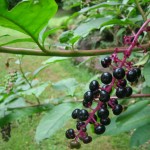
While all parts of Pokeberry are toxic, Okehocking knew how to safely prepare “pigeonberry” or “poke” shoot
But according to the Lenape Nation website: “…some Lenape people remained here in secret. Children of the little known Lenape-European marriages of the 1700s stayed on the Lenape homelands and continued to practice their traditions covertly. Hiding their heritage, they avoided discovery by both the government and their neighbors for more than two hundred years. Now, the descendants of these people have come forward to tell their story.”
Unless otherwise noted or linked, information is from the 1976 book The Down River People of the Lenni Lenape Indians by Jane Levis Carter, Mark One Printing, Philadelphia.

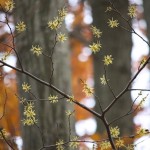
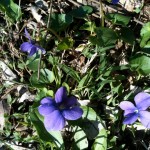
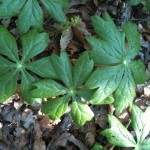
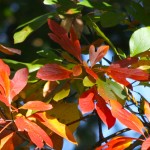









Recent Comments